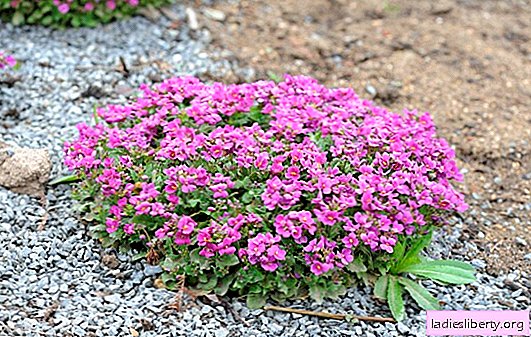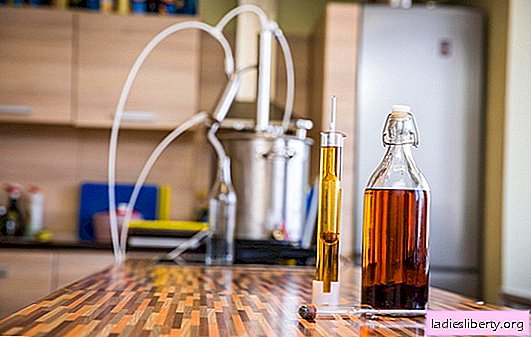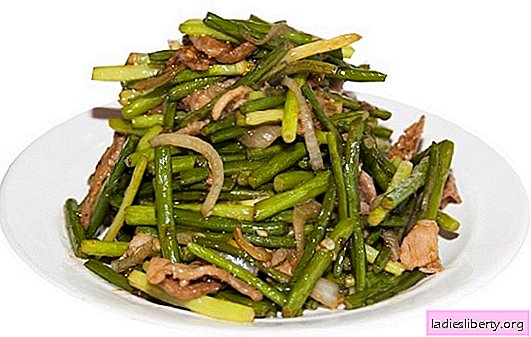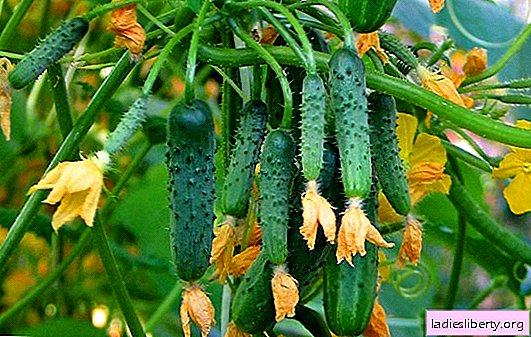
Arabis is a beautiful perennial for alpine slides that does not require much attention.
Planting arabis will be appropriate in the garden under the trees.
The plant multiplies rapidly, turning into a dense carpet. How to plant arabis and take care of it?
Planting arabis seedlings with photo
The plant propagates by seeds, so its planting is carried out in the seedling method. In some regions of Russia with a milder climate, arabis is sown in the open ground in autumn.

The seeds of the plant are small, so they do not need to be deepened especially. They need light to germinate. Seedling containers are filled with a substrate and moisturized, the seeds are evenly distributed on the soil surface. The containers are covered with non-woven material to increase the humidity around the seeds. Germination is carried out at a temperature of 20 C. The whole process takes 20-25 days. So be patient and moisten the soil as needed.
As soon as the shoots appear, the shelter is removed, and the container is put in the brightest place, watering is slightly reduced, the soil is loosened regularly.
Arabis seedlings are growing slowly, dive it when a few real leaves appear. During the dive, seedlings are planted in separate containers or thinned at a distance of 30 cm from each other. If you plan to plant arabis with a dense carpet, then you can not do a dive.

When the seedlings take root, then it gradually begins to harden. For this, the container is regularly taken out to fresh air for two weeks. Keep seedlings out of the rain, cold wind or draft. At night, the container in young Arabisians is brought into the house.
As soon as the seedlings are ready, and the threat of frost lasts a minute, the plants are transferred to a permanent place in the garden.
How to plant arabis in the ground
For arabis, you need to choose the right place so that the plant is pleased with flowering and grow well.
Arabis develops best in open, sunny areas that are well blown by the wind. You can, of course, plant a plant in a shady area, but then the bush will not be so lush, and the flowering will be sparse and short.
The soil for planting arabis in the area should be dry, loose and light. It is pre-digged with organic and mineral fertilizers, cleaned of weeds. Sand is added to excavated soils when digging.
During planting, about 40 cm is left between the plants. To get a dense carpet in one hole, 2-3 seedlings are planted. After planting, arabis is well watered.
Important! If no digestion was made during digging, then after a few days the seedlings can be fed.
Arabis grown from seeds will bloom only in the second year.
Outdoor Arabis Care
Growing arabis from seeds is easy, the plant is very hardy and tolerates drought, but excessive watering is harmful. Therefore, in the rainy season, the plant is watered extremely rarely, so as not to provoke diseases.
The only negative in growing can be called frequent weeding. The plant does not tolerate the proximity to weeds, they can muffle the growth of shoots. Regular loosening of the soil and removal of weeds is essential for the normal growth of the bush. As soon as the young seedlings get stronger, the weeds will no longer be able to break through the dense carpet.
Arabis breeding
Favorite varieties of arabis are propagated not only by seeds. You can resort to the following methods:
• cuttings;
• division of the bush;
• growing layering.
Cuttings are the only way to propagate terry plant forms. With seed propagation, the parental qualities of the plant are not preserved. Leaves with a heel are selected on the cuttings, cutting off part of the bark and stem. Cuttings are carried out when the plant has finished flowering. Rooted cuttings in a greenhouse for a month. They are planted obliquely to ensure proper growth of the horse system. As soon as the plants start growing, they are transplanted to a permanent place.
Division of the bush is carried out after flowering. An adult bush is dug up and divided into several parts.
To get a young plant with the help of layering, in the fall they tilt the shoot to the ground and sprinkle it with fertile soil. Pinch the top of the shoot. As soon as the roots appear at the site of the leaf node, layering is planted in a new place.
Arabis in the fall: how to collect seeds and prepare the plant for winter
During flowering, outline the largest and most beautiful inflorescences. You need to collect the seeds when they are fully ripe with the onset of the first frost. This is best done on a dry sunny day. If you collect the seeds in cloudy and humid weather, then they lose their germination.
Seeds are dried well in a dark, dry place, collected in a paper bag and stored until planted. The fresher the seeds, the better they germinate.
Arabis is considered a hardy plant, but with the advent of cold weather its shoots die already at -5 C. It is impossible to grow a plant as a perennial without shelter. In late autumn, all shoots of arabis are cut off at the soil level, and the planting site is well mulched with dry leaves, peat, spruce branches or covering material.
Difficulties in growing arabis
Since arabis belongs to cabbage crops, their pests are similar. From early spring, the plant is attacked by a cruciferous flea. You should not waste time and effort dusting the land with ash or tobacco dust, it is better to immediately treat with complex preparations.
Another problem when growing is a viral mosaic. You can determine the defeat by the characteristic symptoms - small brown spots, which gradually merge into one. Unfortunately, the viral mosaic is incurable, so you will have to say goodbye to the affected plant. The growing place is well disinfected with a strong solution of potassium permanganate. Planting arabis again is possible only after a year.
Popular varieties of arabis
Among cultivated varieties, some have gained particular popularity:
• Arabis alpine. Perennial propagates well by cuttings, blooms with white or pink fragrant flowers from the end of April for a month.

• Arabis is bruise. The leaves of this perennial are covered with a felt cannon. Inflorescences are collected in loose rosettes of 3-6 flowers.
• Caucasian arabis. A subspecies of alpine arabis. It blooms from early July to frost.

• Arabis pilgrim. The plant prefers stony soil, white inflorescences are collected in loose shields.
• Arabis is undersized. Its flowering is of no value; a plant is grown for attractive fruits.
Having once planted arabis on its plot, the gardener will forever fall in love with this culture for its unpretentiousness and beautiful appearance.











